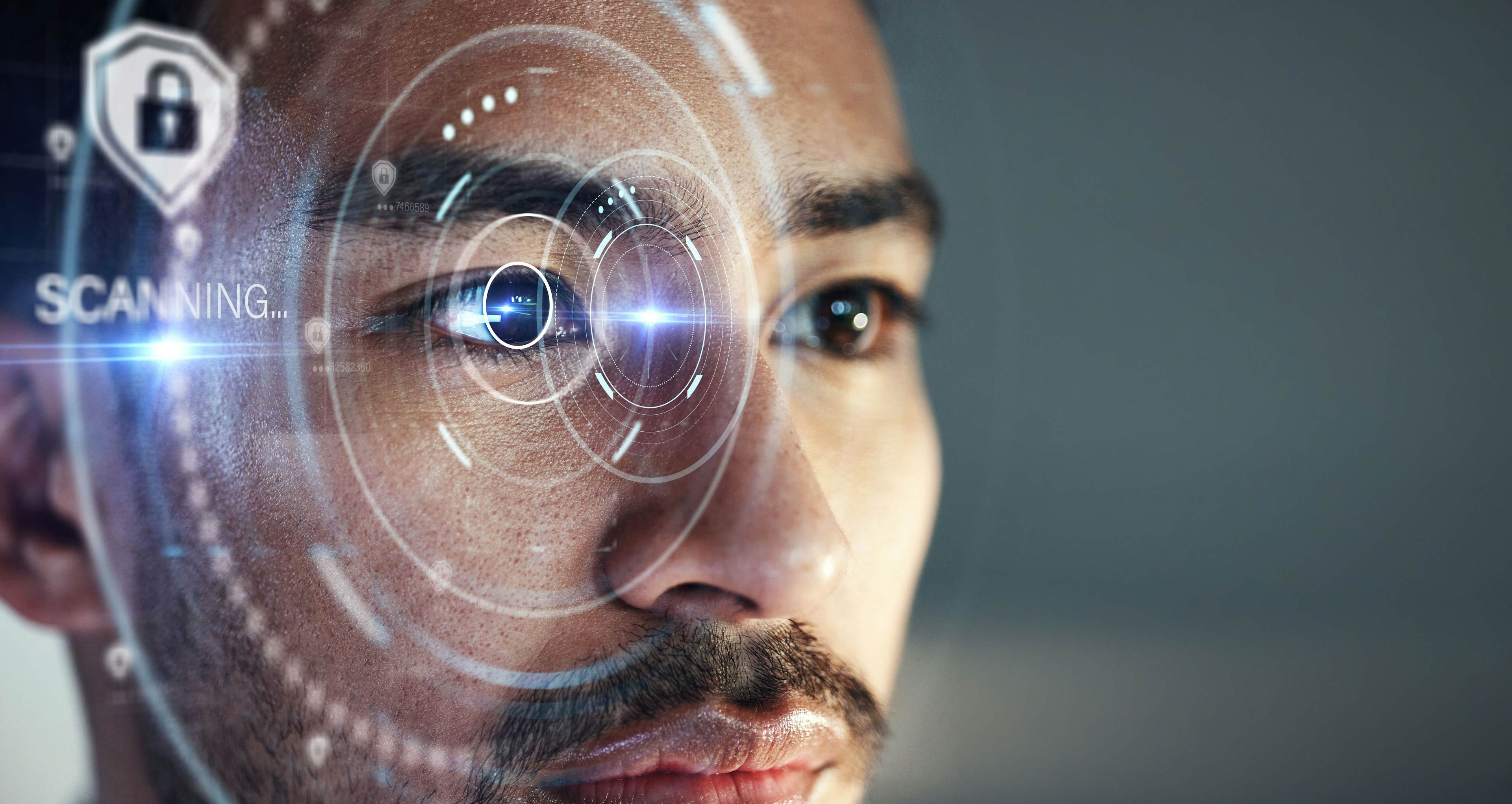Beyond Touch
Understanding the Voice, Eye-Tracking, and Gesture Revolution to Invest in the Startups Catapulting this Transformation

The world is moving beyond touch. The human-computer interface, once dominated by keyboards, mice, and touchscreens, is now entering a new era. Voice recognition, eye-tracking, and gesture-controlled devices are redefining how we interact with technology. This shift, often referred to as the “Beyond Touch” movement, signals a transformation in how we live, work, and engage with the digital world. By understanding these advancements, you can appreciate the profound impact they will have on industries and everyday life.
Revolutionizing Human-Computer Interaction

The evolution of human-computer interfaces is nothing short of revolutionary. The leap from physical keyboards to touchscreens, popularized by the iPhone, was just the beginning. The next wave of innovation—voice, eye, and gesture interfaces—promises to make technology more intuitive and seamless than ever. Voice-controlled devices are enabling natural interactions, eye-tracking is optimizing gaming and augmented reality experiences, and gestures are introducing new ways to navigate virtual and physical spaces. These technologies are creating a broader and richer interface ecosystem, redefining the boundaries of human-computer interaction.
What is the “Beyond Touch” Movement?
At its core, the Beyond Touch movement represents the shift from traditional interaction methods, such as keyboards and screens, to more immersive and human-like ways of communicating with machines. Voice recognition allows devices to understand and respond to natural language, making technology accessible in ways previously unimaginable. Eye-tracking provides insights into user intent and focus, improving user experience in gaming, advertising, and accessibility tools. Gesture recognition, meanwhile, leverages motion and touchless controls, opening up possibilities for augmented reality, virtual reality, and wearable tech. Together, these technologies are laying the foundation for a more integrated and seamless digital experience.
Real-World Applications
The impact of Beyond Touch technologies is already evident in various industries. In healthcare, voice assistants are helping doctors transcribe notes and interact with electronic health records more efficiently. Eye-tracking is being used in gaming to enhance immersive experiences and in advertising to measure user engagement. Gesture recognition is transforming education and training by enabling more interactive and hands-on virtual simulations. As these technologies continue to evolve, their applications will expand, driving innovation across numerous fields.
Understanding the Underlying Technology
The advancements driving the Beyond Touch movement are rooted in sophisticated technologies. Machine learning and artificial intelligence (AI) power voice recognition systems, enabling them to understand context and nuances in speech. Eye-tracking systems rely on infrared sensors and advanced algorithms to detect gaze direction and focus. Gesture recognition leverages computer vision and motion sensors to interpret movements accurately. By exploring these technologies, we can better appreciate their potential and the complexity of their development.
A Historical Perspective
The journey to Beyond Touch has been marked by pivotal moments in technology. The introduction of the graphical user interface (GUI) in the 1980s revolutionized personal computing by replacing command-line interfaces. The iPhone’s debut in 2007 made touchscreens mainstream, setting a new standard for device interaction. Today, Beyond Touch technologies are building on these foundations, pushing the boundaries of what is possible. By understanding this historical context, we can see how each wave of innovation has paved the way for the next.
Challenges and Opportunities
As promising as these technologies are, they come with challenges. Voice recognition systems must overcome accents and background noise to be universally effective. Eye-tracking and gesture recognition require precise calibration and robust hardware to ensure reliability. Additionally, privacy concerns must be addressed, particularly when collecting and analyzing personal data. These challenges, however, also present opportunities for further innovation and refinement, driving the next phase of technological growth.
The Role of Research and Development
The Beyond Touch movement is fueled by ongoing research and development in both academia and industry. Universities and tech companies are collaborating to push the boundaries of what these interfaces can achieve. Breakthroughs in AI, machine learning, and hardware design are continually expanding the possibilities. Understanding the role of research highlights the importance of investing in and supporting innovation at all levels.
Looking to the Future

Imagine a world where technology anticipates your needs—devices that respond to your voice commands seamlessly, augmented reality glasses that follow your gaze to provide information instantly, and environments controlled with a simple gesture. These scenarios are becoming realities, thanks to the Beyond Touch movement. As these technologies mature, they promise to create a more intuitive and connected world, benefiting individuals and industries alike.
Embracing the Shift
The Beyond Touch movement is more than a technological trend; it’s a paradigm shift in how we interact with the digital world. By understanding its components and implications, we can better prepare for the changes it will bring. Whether you’re a tech enthusiast, a professional in an impacted industry, or simply curious about the future, now is the time to explore and engage with these transformative advancements.
Alumni Ventures: Backing the Future
At Alumni Ventures, we are proud to have built a portfolio of over 1,500+ current and historical portfolio company investments, many of which are pioneering technologies at the heart of the Beyond Touch movement. Our funds provide accredited investors the opportunity to support game-changing startups developing technologies like voice, eye-tracking, and gesture-based solutions. By joining our funds, like the AI Fund, you can be part of the journey to shape the future of human-computer interaction while diversifying your investment portfolio with access to high-potential ventures.
Current Portfolio Companies with Alumni Ventures

Opal is transforming AI interaction with next-gen,voice-driven consumer hardware, starting with a sophisticated desktop device that enables seamless communication with Large Language Models at the press of a button. By harnessing advanced voice technology, Opal is leading the shift toward voice as the primary interface for ambient AI.

HeyMilo AI allows companies to automate the job screening process and engage candidates with an always-available, generative AI-powered voice agent. The platform employs AI for interactive candidate assessments, saving time, reducing bias, and informing hiring decisions with dynamic, two-way conversation.

Deako is an IoT company that develops hardware and software products for smart homes. Through the Deako appand voice control, user scan easily manage their home from anywhere.

Midgame develops an intelligent voice assistant for gamers and esports teams. Its AI assistant allows users to stream line their gameplay, expand their abilities, and bring them deeper into the game, all while reducing friction and expanding capabilities.
Learn More About the Foundation Fund
~20-30 investments diversified by stage, sector, geography, and lead investor. Deployed over 12-18 months.
Max Accredited Investor Limit: 249

Michael Collins
CEO, Alumni VenturesMike has been involved in almost every facet of venturing, from angel investing to venture capital, new business and product launches, and innovation consulting. He is the CEO of Alumni Ventures and launched AV’s first alumni fund, Green D Ventures, where he oversaw the portfolio as Managing Partner and is now Managing Partner Emeritus. Mike is a serial entrepreneur who has started multiple companies, including Kid Galaxy, Big Idea Group (partially owned by WPP), and RDM. He began his career at VC firm TA Associates. He holds an undergraduate degree in Engineering Science from Dartmouth and an MBA from Harvard Business School.
This communication is from Alumni Ventures, a for-profit venture capital company that is not affiliated with or endorsed by any school. It is not personalized advice, and AV only provides advice to its client funds. This communication is neither an offer to sell, nor a solicitation of an offer to purchase, any security. Such offers are made only pursuant to the formal offering documents for the fund(s) concerned, and describe significant risks and other material information that should be carefully considered before investing. For additional information, please see here. Example portfolio companies are provided for illustrative purposes only and are not necessarily indicative of any AV fund or the outcomes experienced by any investor. Example portfolio companies shown are not available to future investors, except potentially in the case of follow-on investments. Venture capital investing involves substantial risk, including risk of loss of all capital invested. This communication includes forward-looking statements, generally consisting of any statement pertaining to any issue other than historical fact, including without limitation predictions, financial projections, the anticipated results of the execution of any plan or strategy, the expectation or belief of the speaker, or other events or circumstances to exist in the future. Forward-looking statements are not representations of actual fact, depend on certain assumptions that may not be realized, and are not guaranteed to occur. Any forward-looking statements included in this communication speak only as of the date of the communication. AV and its affiliates disclaim any obligation to update, amend, or alter such forward-looking statements, whether due to subsequent events, new information, or otherwise.